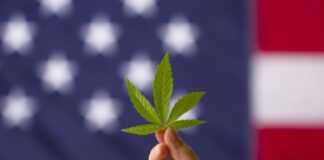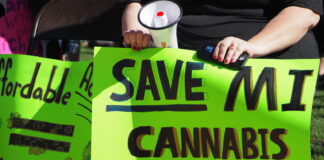
In the United States, the ongoing federal prohibition against cannabis creates some interesting legal contradictions. In states with legal adult-use, for example, federal prohibition creates pockets of land where federal law holds and state law doesn’t. Basically, any land the federal government controls is under federal jurisdiction. And that means places in the U.S. like national parks and forests, wilderness preserves and wildlife refuges are no-cannabis zones, even if they reside in a state, like California, with legal weed. North of the border, however, will be a different story. Under the Cannabis Act of 2018, cannabis consumption will be permitted in Canada’s National Parks.
Campers and Hikers Can Legally Consume Cannabis in Canada’s National Parks
There are currently 39 National Parks in addition to eight National Park Reserves in Canada. These parks and reserves cover about 126,700 square miles of the country, or about 3.3 percent of its total area. And there is at least one in each of Canada’s thirteen provinces and territories. Canada’s park system is also immensely popular. From 2016 to 2017, Parks Canada says 15,449,250 people visited the country’s national parks and reserves. And once Canada’s Cannabis Act goes into effect tomorrow, October 17, those visitors will be able to consume cannabis on park grounds.
Just two days ahead of legalization, Parks Canada announced a rule change to permit campers to smoke cannabis. The authorization applies specifically to registered campsites in National Parks. Hikers will also be able to enjoy cannabis on National Park hiking trails and anywhere in the untrammeled backcountry. But visitors won’t be able to smoke weed in all park common areas, like picnic shelters and playgrounds. And that’s to help minimize children’s exposure to cannabis smoke.
Canada’s National Parks are A Cannabis Destination
There will be some restrictions to cannabis consumption at certain National Park facilities. At public day-use areas, cannabis consumption will be subject to provincial rules regarding consuming weed in public. But rules regarding public consumption can also vary from town to town within the same province. In Alberta, for example, the massive Banff National Park, Canada’s most popular, won’t allow visitors to consume weed in shared public areas. But at day-use areas around Lake Louise in Alberta, public consumption will be totally okay.
Keeping track of which town has which rules could get tricky, but parks should have signs posted, and visitors can look up information online. Still, given the federal legalization of cannabis, it’s unlikely that Canada’s National Parks will become any less permissive than they were prior to October 17. In on-the-street-interviews with Ontario residents about Parks Canada’s decision, many said smoking weed in National Parks is already extremely common. Tomorrow, it will also be legal.











